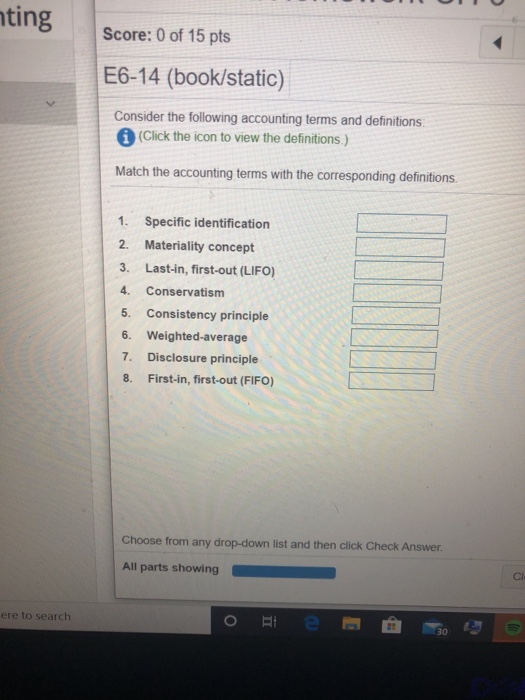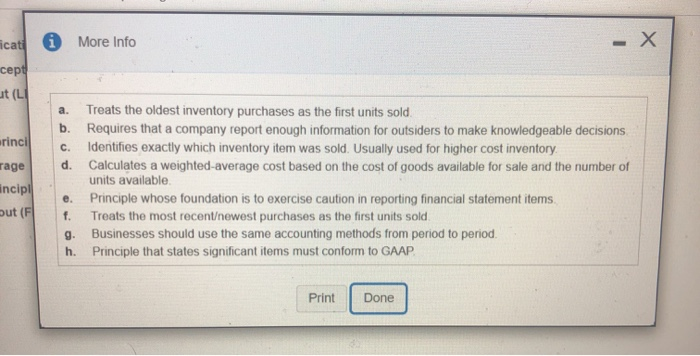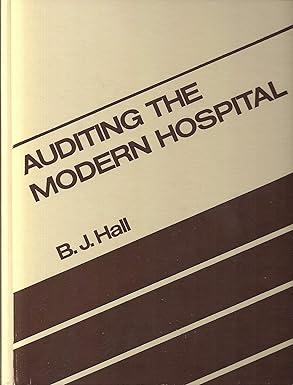nting Score: 0 of 15 pts E6-14 (book/static) Consider the following accounting terms and definitions: (Click the icon to view the definitions.) Match the accounting terms with the corresponding definitions. 1. 2. Specific identification Materiality concept 3. Last-in, first-out (LIFO) 4. Conservatism 5. Consistency principle 6. Weighted average 7. Disclosure principle 8. First-in, first-out (FIFO) Choose from any drop-down list and then click Check Answer. All parts showing CI ere to search 30 C. Homework CHO 6 of 10 (5 complete) HW tatic) accounting terms and definitions: view the definitions) terms with the corresponding definitions mical 0 More Info - X ncept out (LI a. b c. d. princi erage rincipi -out (FI Treats the oldest inventory purchases as the first units sold Requires that a company report enough information for outsiders to make knowledgeable decisions Identifies exactly which inventory item was sold. Usually used for higher cost inventory Calculates a weighted average cost based on the cost of goods available for sale and the number of units available Principle whose foundation is to exercise caution in reporting financial statement items Treats the most recent newest purchases as the first units sold Businesses should use the same accounting methods from period to period. Principle that states significant items must conform to GAAP e f. g h. Print Done ny drop-down list and then click Check Answer ming Clear All Check Answ o i e 30 5 a. ficati 0 More Info - cepe ut (LI Treats the oldest inventory purchases as the first units sold. b. Requires that a company report enough information for outsiders to make knowledgeable decisions erinci Identifies exactly which inventory item was sold. Usually used for higher cost inventory d. Calculates a weighted-average cost based on the cost of goods available for sale and the number of units available incipi Principle whose foundation is to exercise caution in reporting financial statement items but (FI Treats the most recentewest purchases as the first units sold g. Businesses should use the same accounting methods from period to period h. Principle that states significant items must conform to GAAP c. rage e. f. Print Done









